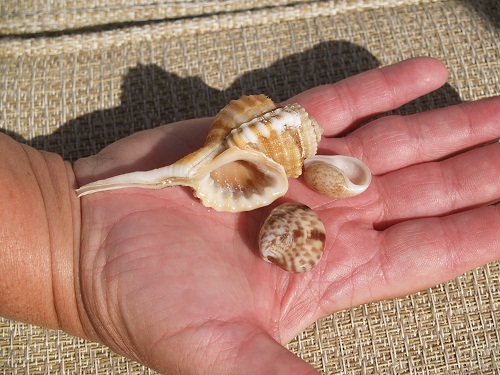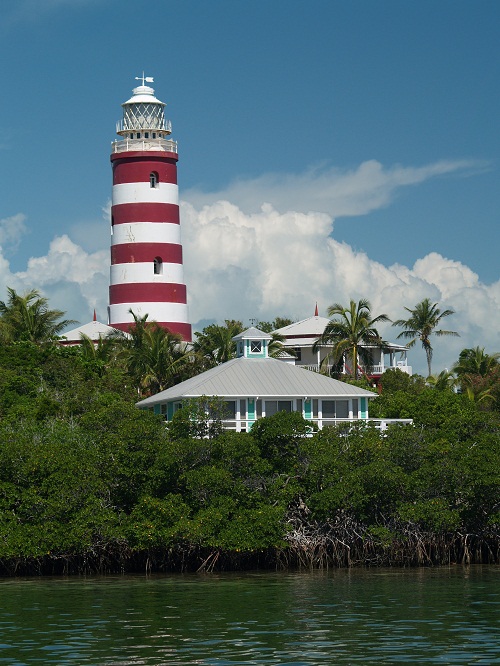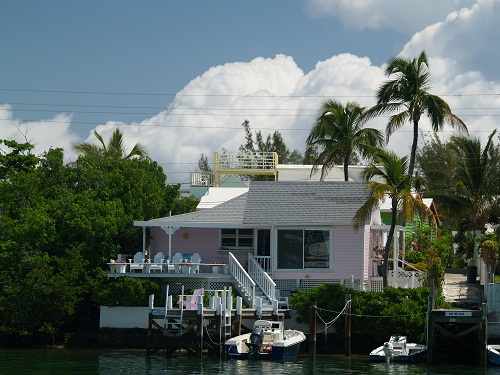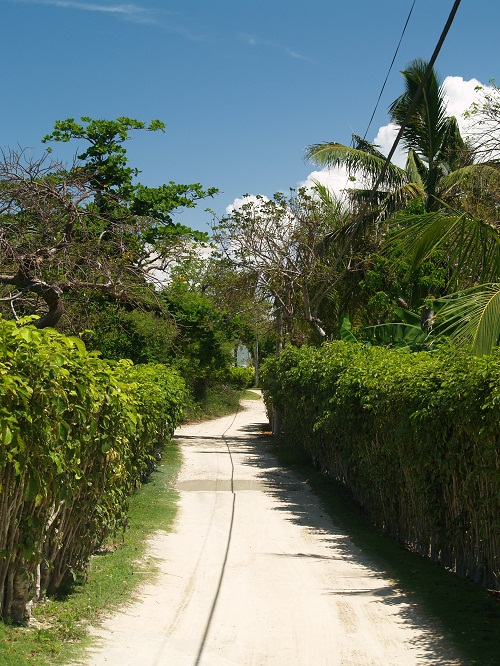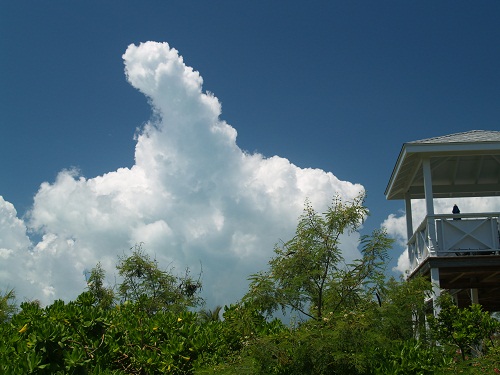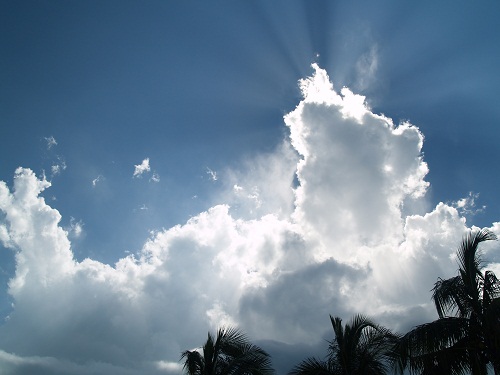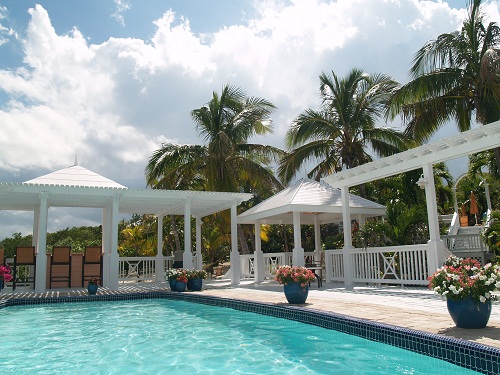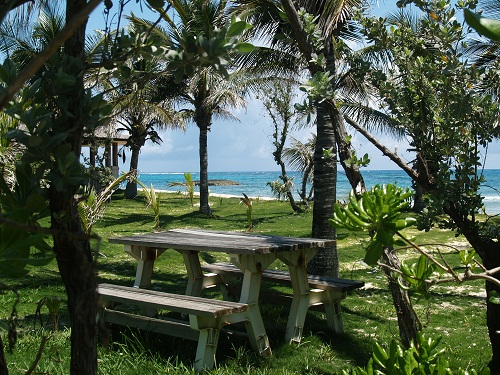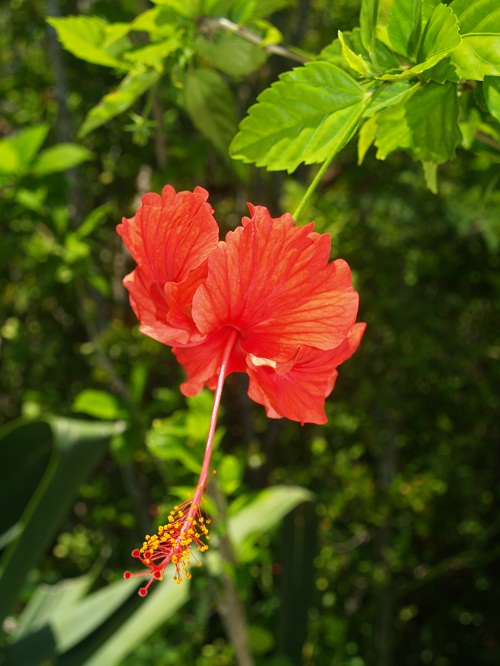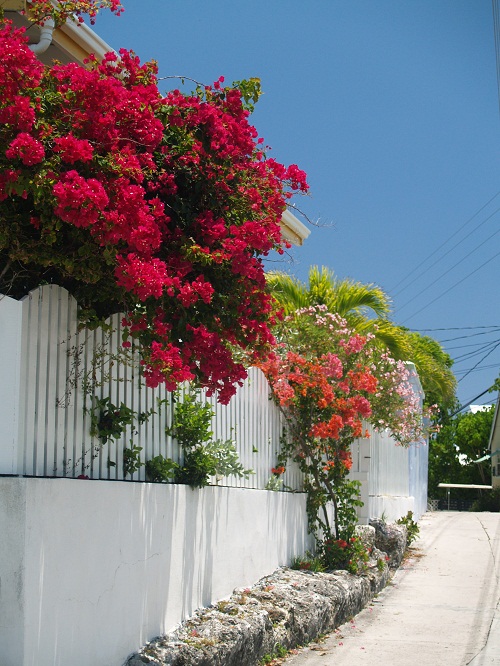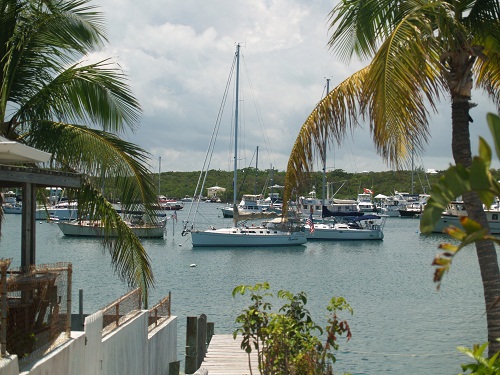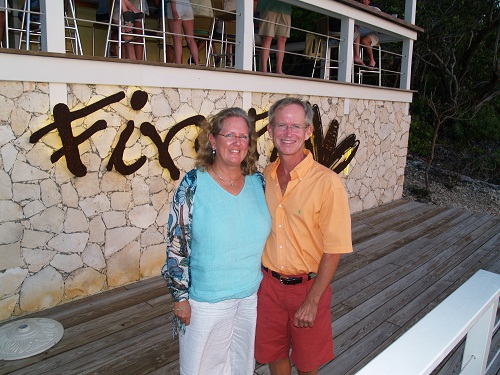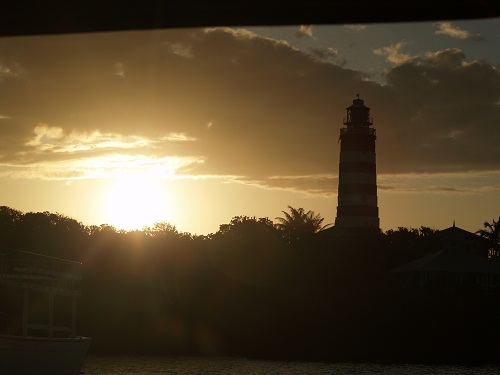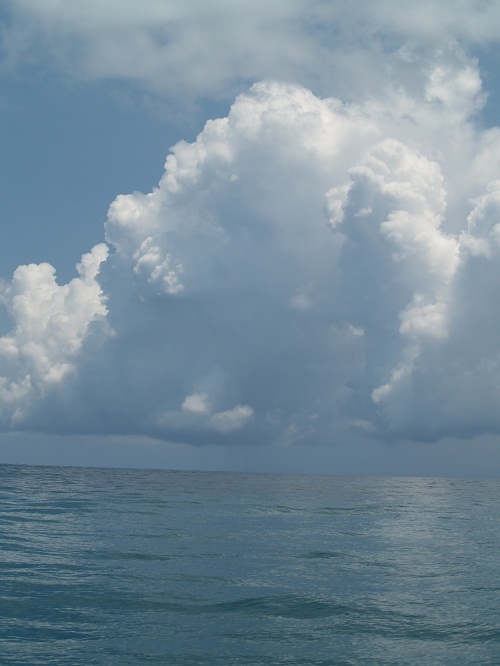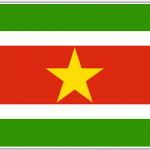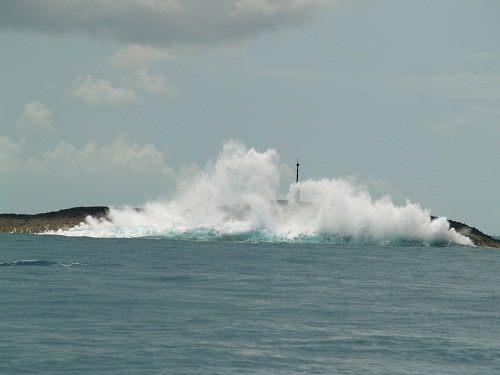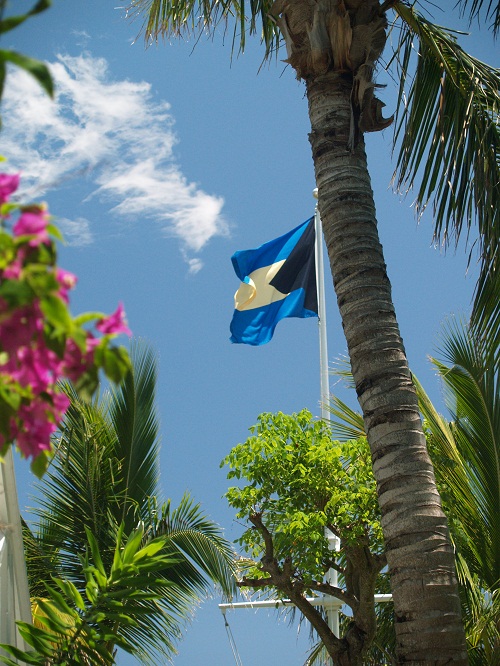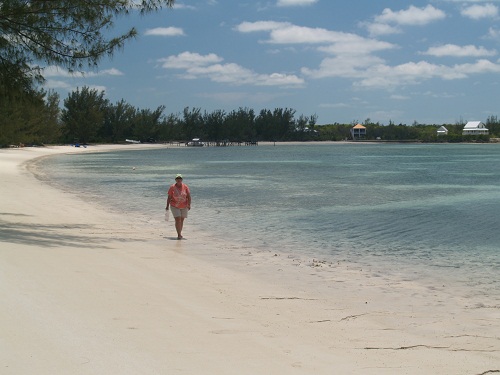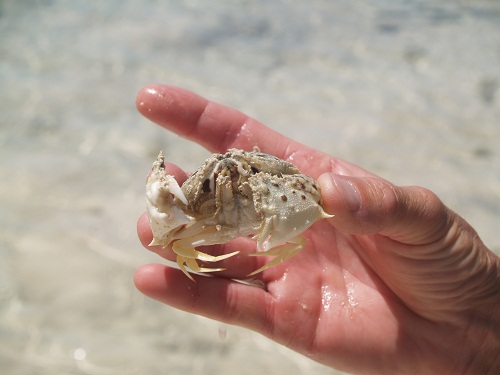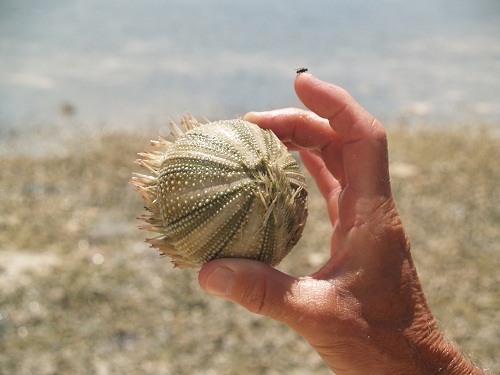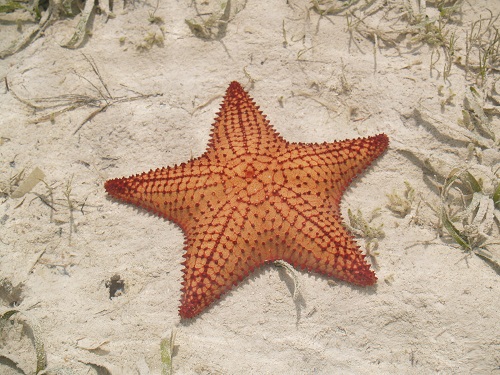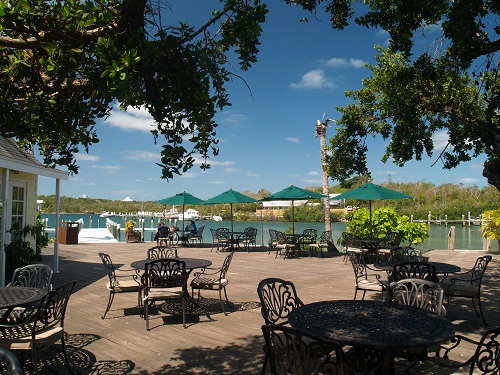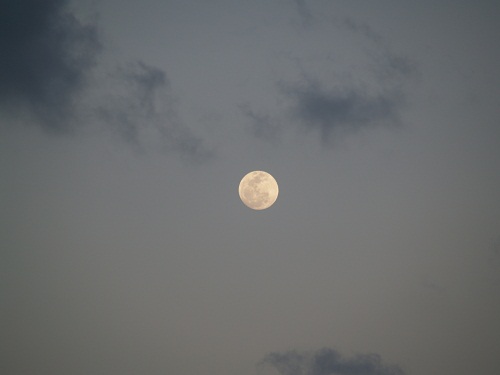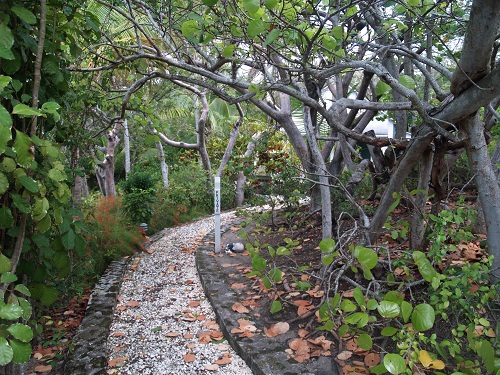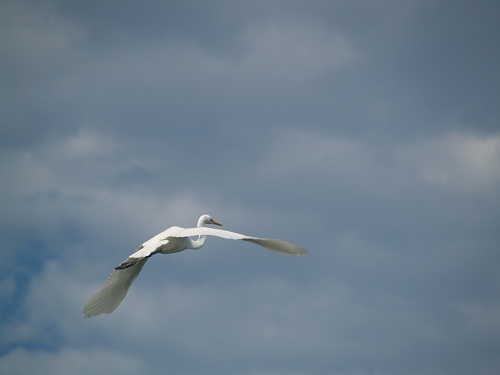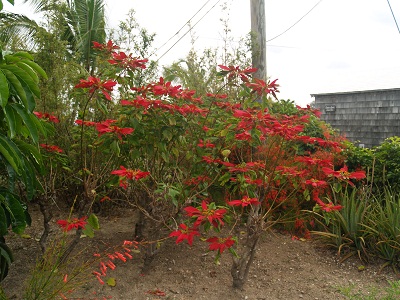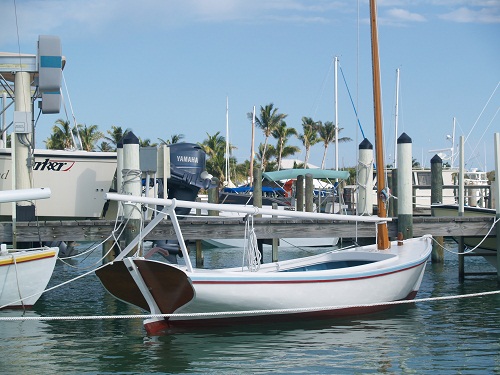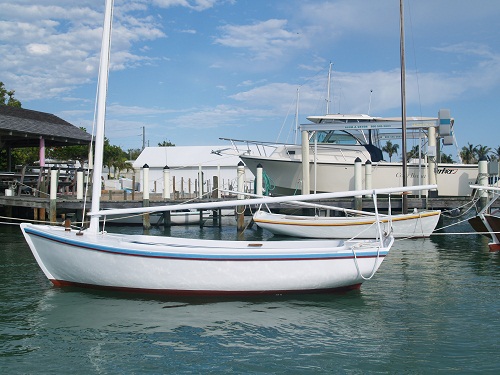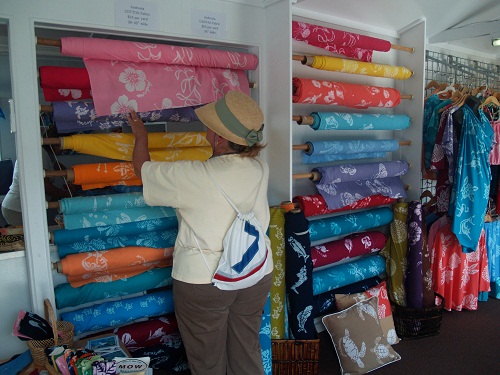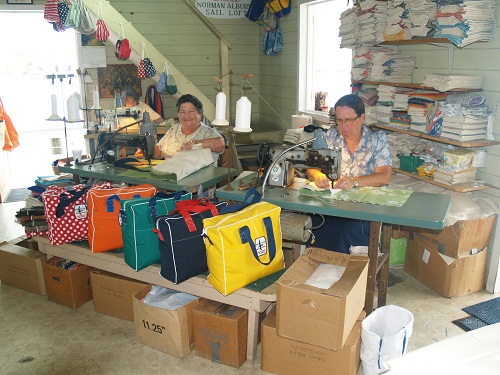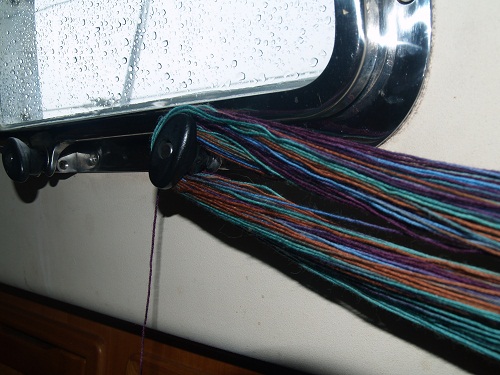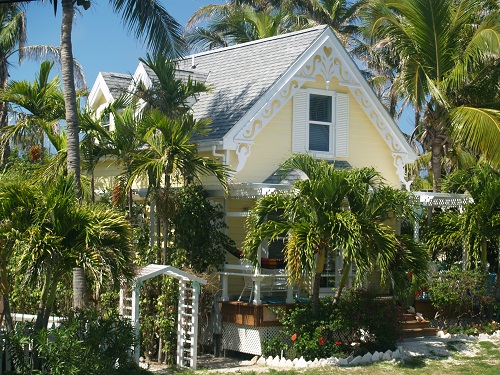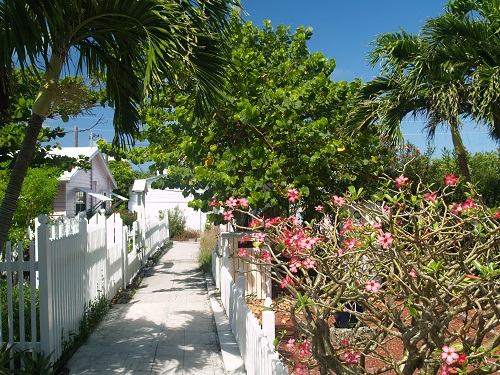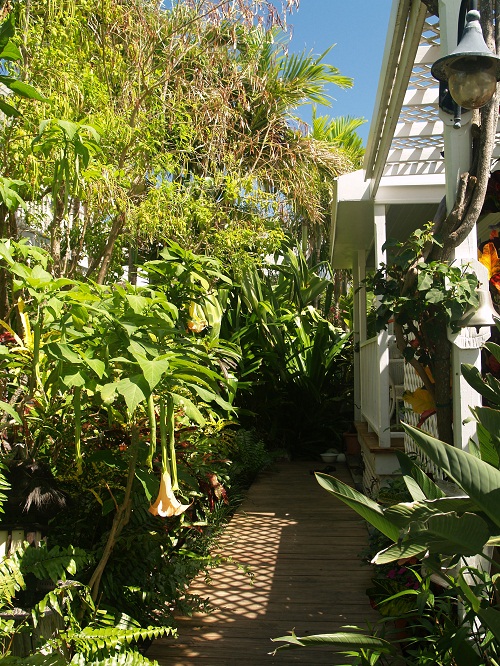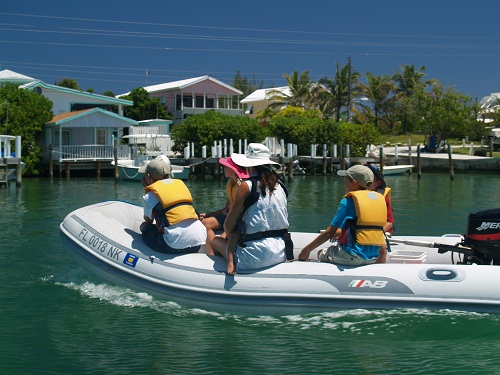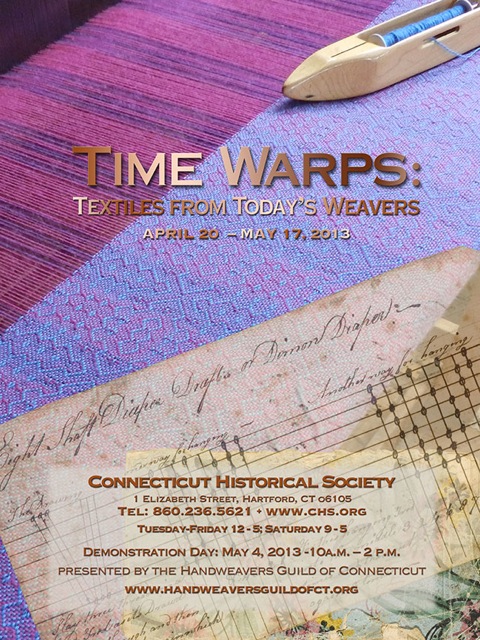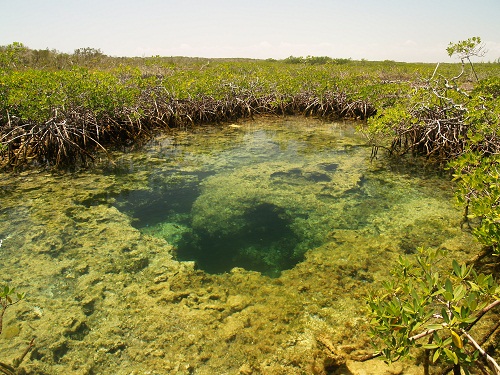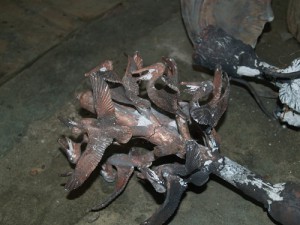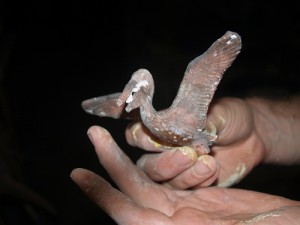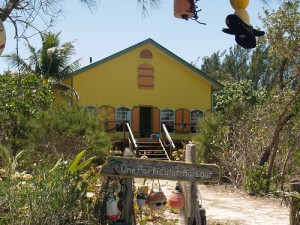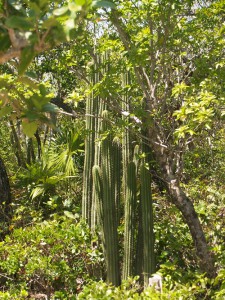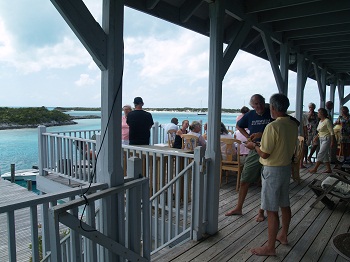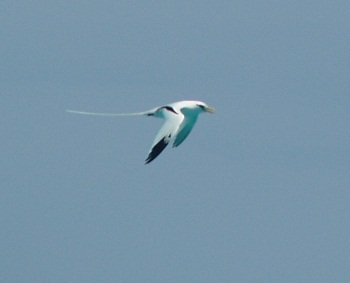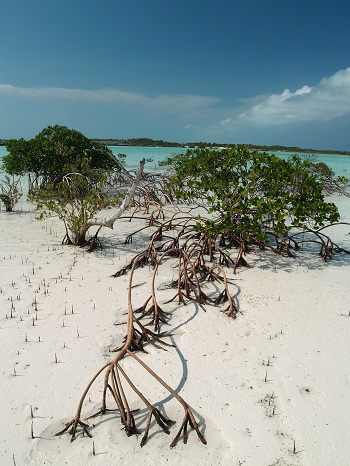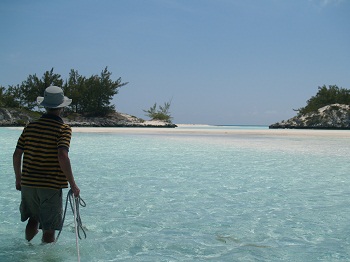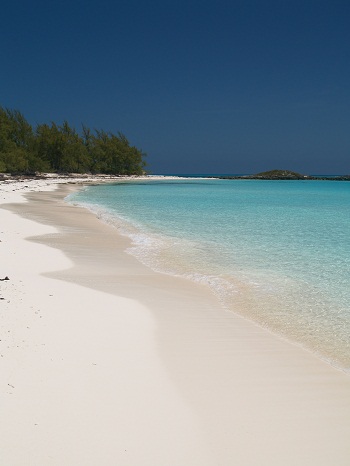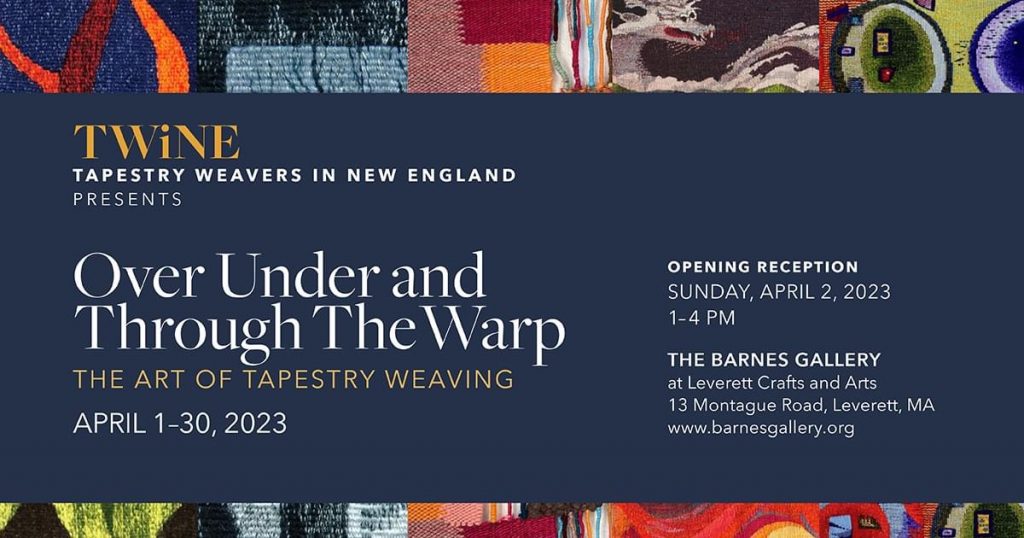As my time here grows short, I have been reflecting on the months I’ve spent in this remote tropical culture, and what I’ll take with me when I leave. I think one day spent in New Plymouth over the weekend summed it up rather well.
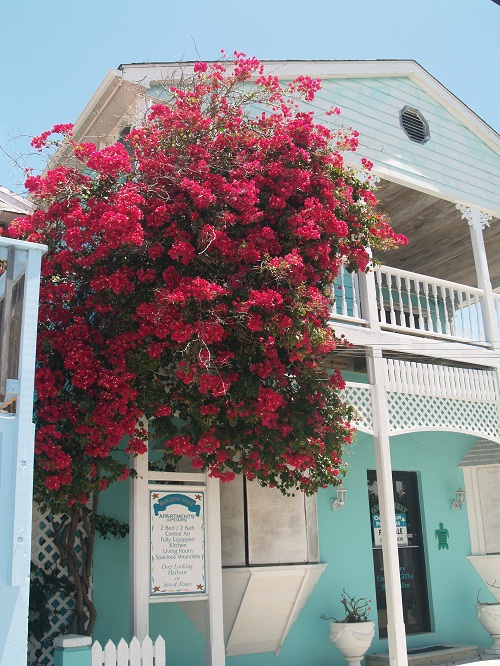
When we dinghied in to New Plymouth on Saturday, we found the settlement abuzz with activity. Walking through the town we saw a gathering of women in the public park decorating a tent over the basketball court with purple and white balloons and arranging matching table settings for a large dinner. It looked like preparations for a wedding!
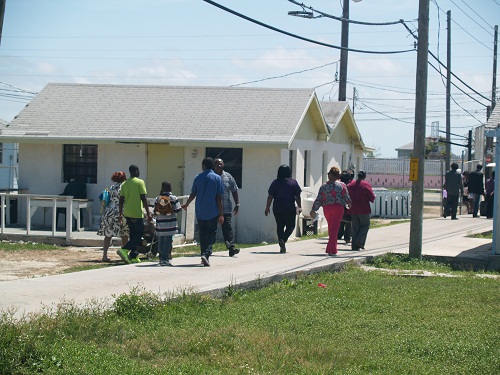
Moments later, on a different street, a golf cart whizzed by, with purple and white balloons streaming from it. One white balloon came flying off toward me, and I picked it up and returned it to the young man who was driving the cart. Surely this was the bride’s chariot!
Passing the cemetery on our walk, we were drawn through the gates by the lovely view of aquamarine waters, a ring of reefs, and distant islands. The grave markers were all recently whitewashed and many graves had flowers in bloom… bougainvillea, gaillardia, portulaca, lantana. That’s when we noticed a little tent with chairs underneath, placed near a freshly dug hole in the ground. Looks like funeral preparations were going on right down the street from the wedding preparations.
A short walk from the cemetery we found the local museum, and while were admiring the medicinal garden and the ‘out kitchen’ we heard hymn singing at the church next door…
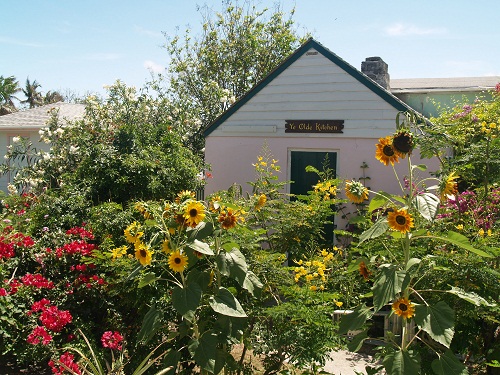
…and then the distinctive sounds of mourning. The choir processed out into the street, followed by the pall bearers and the mourners. Together they all processed on foot the short distance through the streets toward the cemetery.
The town dock was busy with ferries bringing full loads of friends and families from other islands to participate in the wedding and the funeral. In such a small community, it seemed apparent that everyone would be participating in both events. What a sad and joyous day….
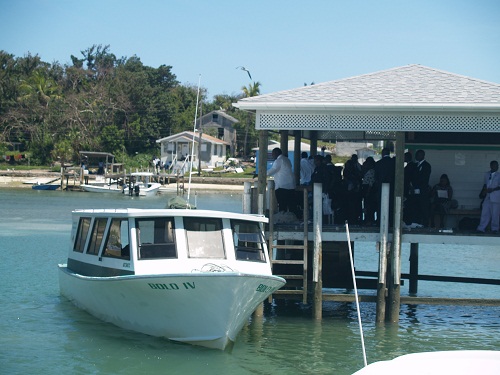
And these two events that rallied an entire community, and brought in a hoard of folks from outlying communities, clarified my impressions of the time spent here in these small settlements.
There are many conveniences in my life at home that I no longer take for granted. Water is probably the the most striking example of a precious commodity here. Many islands in the Bahamas have no fresh water at all. Hard to imagine, but true! In recent times, some of these islands have opted to put in reverse osmosis systems for making fresh water from salt. It is an expensive way to get fresh water so water is quite a luxury.
On several islands we visited there was a salt water pond with a shallow lens of fresh water on top, salt water being heavier than fresh. This lens of water is carefully tapped each day by the residents. On Rum Cay, someone would deliver a big tank of fresh water to the marina on the back of a flat bed truck several times a week. It had to be carefully rationed out to the boats in the marina at $.45 a gallon. I watched the local fisherman clean an entire day’s catch with only a small bucket of fresh water. Everyone knows how to conserve in these islands.
We heard that the residents of Hope Town recently voted against having a water making system installed on the island. They have chosen to continue collecting rain water in cisterns as they have done for generations. It’s a viable option in the Abacos since there is a reasonable amount of rain here. Still, there is dry season and they all have to be very careful at that time of year.
Having little fresh water certainly puts a different perspective on bathing and laundry and general household cleaning. It has been quite an eye opener for me, even though I have always considered Bob and I fairly frugal with water usage! I know there are plenty of places in the world where water is much scarcer than here in the Bahamas, and that realization stuns me.
As cruisers we have opted to install a water maker onboard Pandora, and it is powered by our solar panels on top of the canvas work that shades our cockpit (called a bimini). Many cruisers also have wind generators. There is plenty of sunlight and wind down here to supply our electrical needs: electric lights at night, hot water, electronic gizmos such as our navigational system, radio communication system, chargers for our computers, ipad and smart phones…. it’s pretty amazing that we can have so many toys and be completely off the grid! When the weather doesn’t cooperate (on the rare days when there is no wind or sunlight) we fall back on running a small gasoline powered generator. Our cooking fuel is propane, and luckily we have found a number places along the way to replenish our two 10 lb. tanks. We use about 10 lbs. a month.
Electricity in any form is a feat of determination here. Most settlements are run on generators, and I have given up keeping track of the times when the power goes out on these islands. It’s just a facet of daily life. Surprisingly, in spite of the constant winds down here, we have seen very few wind generators. …or solar panels. Yet just getting fuel for the generators is another feat of determination. Supply boats arrive only once a week, and that is at the mercy of the weather. I have seen first hand that there are plenty of weeks with no hope of seeing the boat come in! People here are very familiar with doing without. Remember the old adage, “Make do and mend”? It’s alive and well down here….
I couldn’t help noticing the fashion sense of the women going to the wedding this weekend. I think a significant number of women made their own outfits. These outfits were a feast of bright colors in dress styles I’ve never seen anywhere on a rack. It was such a thrill to see so many women making do, and doing it in their own unique style. I’m sure they would prefer to have access to an array of inexpensive clothing chain stores, but instead there was such a marvelous array of individual creativity on display….well, what can I say? I loved it. I might not want to participate in creating my own wardrobe, but I certainly enjoyed being a spectator of it here.
When you are living off the grid lots of daily chores begin to take on greater significance. If you are walking a long distance to gather water or go the market, or gather at the dock to see what has come in on the supply boat, it is a good opportunity for connecting with others who are doing the same. The camaraderie that comes from spending so much time on the little chores in life, amongst others doing the same, is hard to beat. No wonder the Bahamians are so friendly. I have become a bit slower in my quest to accomplish chores….a bit more ready to listen… to slow down… I don’t want to lose that enjoyment of being less frenetic when I return home.
For cruisers and native islanders, both living such ascetic lives, there is the balance of a rich community and a wealth of natural beauties.
Here are a few scenes of the lovely settlement of New Plymouth….
The historic gaol (jail), painted the traditional pink of Bahamian government buildings!
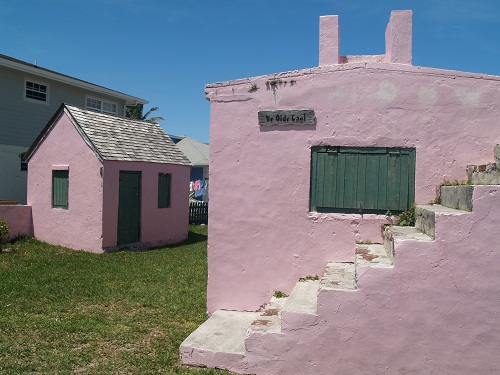
One of the many pretty churches in New Plymouth.
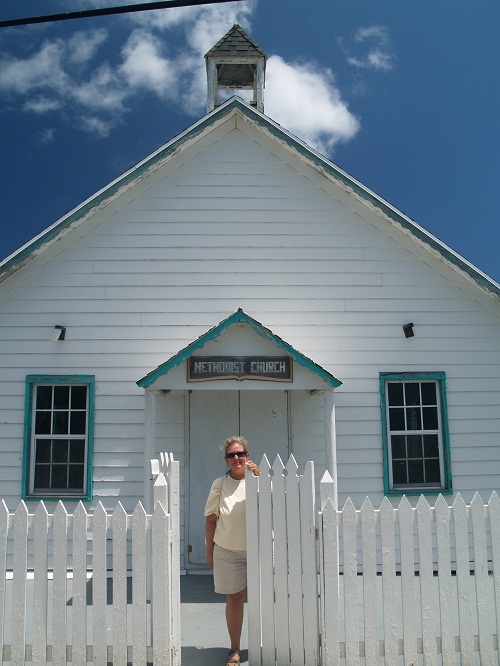
Lush tropical gardens everywhere! 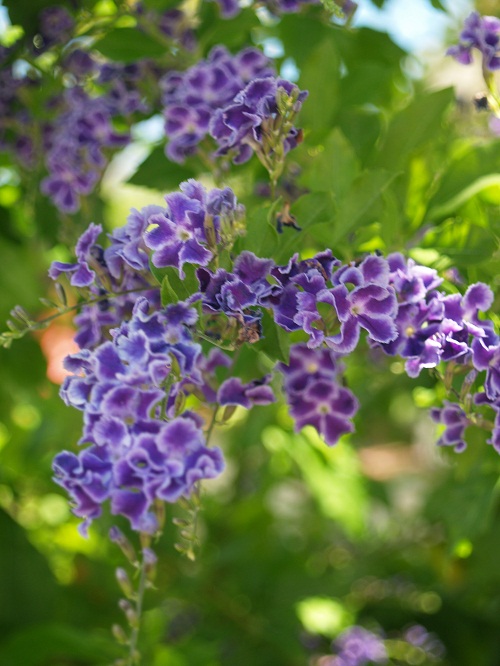
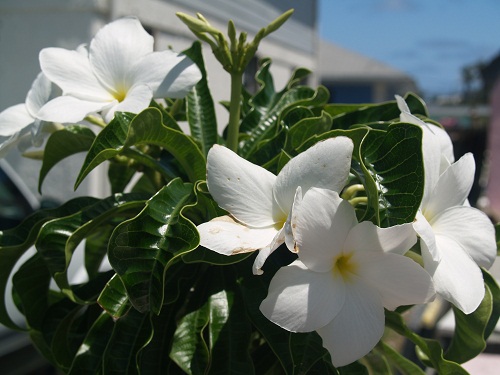
And from the shallow waters where we are anchored in a small harbor just north of New Plymouth…
A sea slug in clear water…. when I first saw this I thought it was a lettuce leaf bobbing along the beach! Then I noticed the head and antennae!
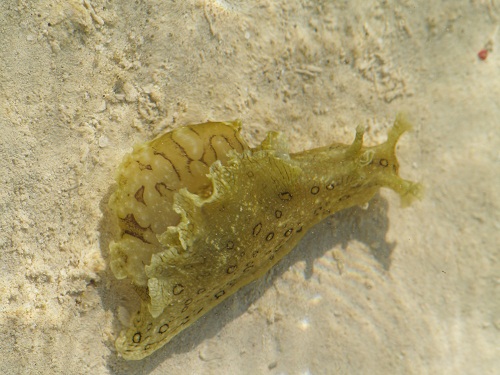
This bird was keeping an eye out for tasty treats from his perch in the mangroves at the edge of the harbor.
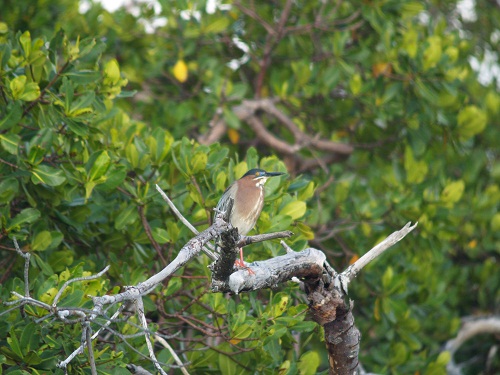
And the day’s haul of treasures from the nearby beach!
